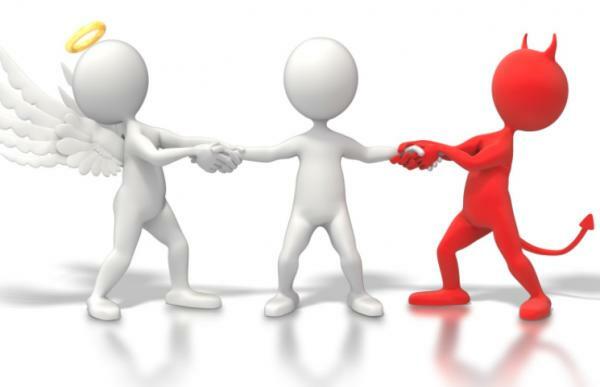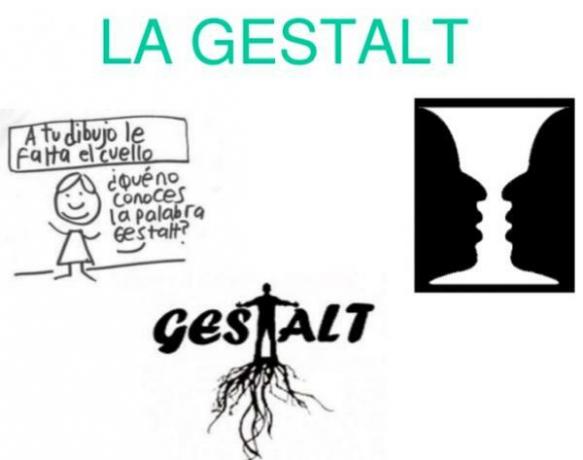
For centuries, philosophers have wondered about the sense of morality, wondering if there was a innate original faculty to discern between good and evil, or if, on the contrary, what we call moral it is nothing more than a set of acquired habits. It took until the twentieth century for the study of morals to move from philosophical terrain to that of psychological research.
Currently, there are other psychoanalytic perspectives that place more emphasis on the positive aspects of the bond of affection between parents and children as a foundation of moral development that in the coercive practices of the adult. These proposals, based on the Bowlby Attachment Theory, have allowed greater empirical testing than the classical psychoanalytic hypotheses.
However, a hundred years of empirical research have not resulted in agreement on key issues such as the following:
- Is morality a genuinely human characteristic? If morality is defined as the ability to judge one's own and others' acts as good or bad, then it can be said that only humans have moral capacity. If it is defined as a set of habits and behaviors appropriate to the norms (avoiding punishment and seeking reward), then there is nothing specifically and exclusively human about it.
- Where does the sense of right and wrong come from? Contemporary psychology explains morality as the result of some kind of process, be it developmental or learning.
- Is there genuine moral progress with development? Although no psychologist conceives of morality as something that is acquired once and for all, the concept of moral progress differs according to the theoretical approach.
- What role do emotions have in morality? For some authors, the true essence of morality is the ability to feel and express emotions, and not moral judgment or conduct in accordance with social norms. However, psychologists often agree that emotions play an important role in driving moral behavior.
- Is there a relationship between what people think they should do and what they actually do? Some theories presuppose a dependent relationship between behavior and moral judgment, others hold that these are weakly related aspects.
Following Turiel, we have classified the different theories into two broad categories: non-cognitive approaches and cognitive-developmental approaches. The former argue that people's socio-moral behavior does not depend on reason or reflection, but on processes that are beyond their conscious control. Psychoanalysis, behaviorism, and learning theories are within this approach.
On the contrary, for the cognitive-evolutionary approaches the essence of morality is found in the capacity of subjects to make judgments about good and evil and attribute an important role to thought and reason. The theory of Piaget and Kohlberg's They are the two most important proposals within this approach. Learning theorists who define morality as rule-compliant behavior are primarily concerned with the effective behavior of children in diverse situations.
For their part, studies based on psychoanalytic assumptions are concerned with identifying the emotions or the feelings the child experiences when rules are violated, such as shame or embarrassment guilt. Theorists of cognitive-evolutionary approach have studied above all moral reasoning, that is, the judgments made by people kids when they are presented with hypothetical or real moral conflicts.
It must be said that fewer and fewer authors polarize their research exclusively towards behavior or reasoning. In particular, cognitive-evolutionary theorists increasingly approach the joint study of moral judgment and behavior in order to analyze their evolutionary relationships.
Theories as different as Freud's psychoanalysis, behaviorism, and learning theories adopt a non-cognitive perspective of moral development. Underlying all these theories is a dichotomous conception of the child-society system whose interests are in conflict (the personal good against the social good), so that society must guarantee social order by promoting the child's adherence to the norms of their community. In short, control comes from the social environment and is established by rules and instructions that direct the life of the individual. Freud Convinced that human nature is guided by powerful destructive impulses, Freud thought that human nature society can only survive by defending itself against them and protecting people from the aggressive action of others members. This opposition between the selfish and antisocial interests of the individual and those of society to be preserved is a key element of Freudian thought and its moral conception.
According to Freud, in the first years of life, the child has no control over his impulses and it is the parents who must exercise it, limiting negative behaviors and promoting positive ones. Over time, this coercion will give way to a progressive internalization of the norms, to an entity internal to the child himself that "watches over" him. This is what Freud called the Super-ego, and explained its emergence from the intense conflicts that occur between the sexual and aggressive impulses of the child, on the one hand, and the increasing demands of the social environment, on the one hand, other. Freud highlights the importance of the resolution of the so-called Oedipus conflict for the development of moral conscience.
It can be said that the Oedipus conflict arises when the child begins to experience sexual desire towards the parent of the opposite sex while feeling an intense rivalry towards his own sex. But it cannot satisfy any of these impulses since society prohibits sexual attachment to a family member and demands a control of aggressiveness in social life.
In addition, the child feels threatened by the parent of his own sex, from whom he fears revenge. In the case of the male, he fantasizes about the cruel retaliation of being castrated. In girls, on the other hand, fear is less intense because they lack a penis (this is why Freud suggested that women develop a weaker moral conscience than men). In any case, boys and girls suffer tension and fear due to all those irrational and unconscious forces and that forces them to redirect his impulses, repressing his aggressive drives towards the parent of their own sex and the sexual ones towards the other. Meanwhile, by identifying himself with the parent of his own sex, the child maintains the fantasy of getting the sexual love of the other parent, avoiding the risk of retaliation.
All this process leads the child to internalize the moral norms and values of parents and society. By making these norms his own, he has acquired a level of consciousness, the Superego, which from now on will control and regulate his behavior from within. The superego also has a form of sanction much more powerful than external pressure: the feeling of guilt. According to this perspective, being moral means abiding by the norms imposed by society because its transgression entails intense negative emotions associated with the feeling of guilt. In other words, mature morality is one in which the pressure to act according to norms is no longer external to internal. Empirical studies to test these hypotheses are scarce, not only because the psychoanalytic current is situated in a field far from systematic research, but also also because of the difficulty of directly examining the validity of assumptions such as the Oedipus complex, castration anxiety in boys or penis envy in girls. girls
Currently, there are other psychoanalytic perspectives that place more emphasis on the positive aspects of the bond of affection between parents and children as a foundation of moral development that in the coercive practices of the adult. These proposals, based on Bowlby's Attachment Theory, have allowed greater empirical testing than the classical psychoanalytic hypotheses. Learning theories Most learning theories have approached the problem of morality from a common perspective that can be summarized as follows: everything that we call morality does not constitute a special case, different from other behaviors, since the same mechanisms learning basics (classical conditioning, association, etc.) by which any behavior is acquired serve to explain the so-called moral conduct.
H.Eysenck argues that moral behavior is a conditioned reflex, not learned behavior in the sense that we learn habits or behaviors. According to him, the reaction of what we call moral conscience It is nothing more than fear and anguish repeatedly associated in the past with the punishment we receive for having engaged in antisocial behavior. Eysenck also proposes a biological theory to explain the differences that exist in the development and moral behavior of people: according to him, they are due to differences genetic levels of cortical activation (and susceptibility to conditioning) that make some people more prone to social conditioning than others. thus, children with more impulsive behaviors (with low cortical activation) condition more slowly and adapt less to the socialization process. However, empirical results have not shown a stable relationship between conditionality and moral behavior. Eysenck downplays the role of learning in the process of moral conscience formation and denies that there is a moral conscience.
According to Skinner, moral behavior is the result of the action of a simple behavior selection mechanism known as operant conditioning. Each person will adapt those behaviors and values that have been reinforced in their own learning history, since they are the particular experiences that she has had, the type of norms to which she has been exposed and the rewards or punishments that she has received, which determine that set of behaviors called morals. More recently, Bandura's stream of social learning argues that people's social behavior cannot be explain only by these simple mechanisms and that, in reality, the most important source of social learning is the observation of the others. It would be impossible for the child to acquire all the repertoire of social behaviors that he has if he had to do it by trying each one of them.
He can learn by observing what happens to others in such a way that if someone is rewarded for acting In a way, the child will tend to imitate him, while he will not if he observes that the model has been punished. But the child also learns what parents or others say about desirable and undesirable behaviors. Finally, he comes to regulate his own behavior through evaluative self-sanctions, that is, comparing any possible action with the moral standards what has internalized.

